15 Hidden Dangers in Your Home You Should Never Ignore (original) (raw)
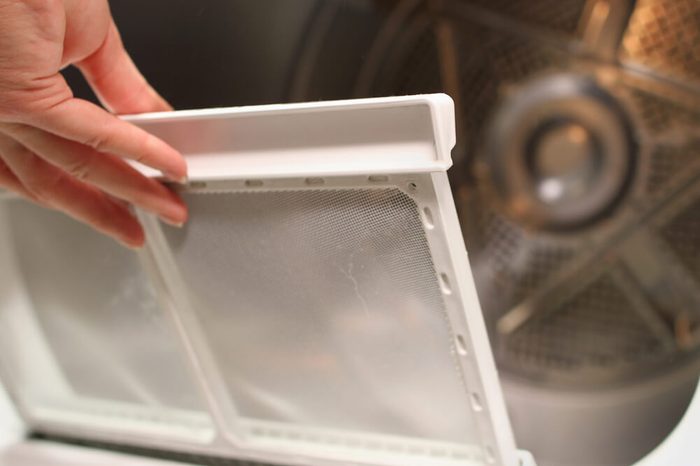
Matt Valentine/Shutterstock
Lint
If it’s taking longer than usual for your clothes to dry or the clothes are super hot after a dry cycle, you could have a build-up of lint—even if it’s not visible in the lint screen. “Lint is an extremely flammable material,” says Jason Kapica, president of Dryer Vent Wizard. “Oxygen moves through a dryer and its vent when the machine is running. There is a heating element inside the dryer providing a potential ignition source.” Reduce the risk by removing the lint from the lint screen after each load and get a yearly cleaning of the dryer vent line.
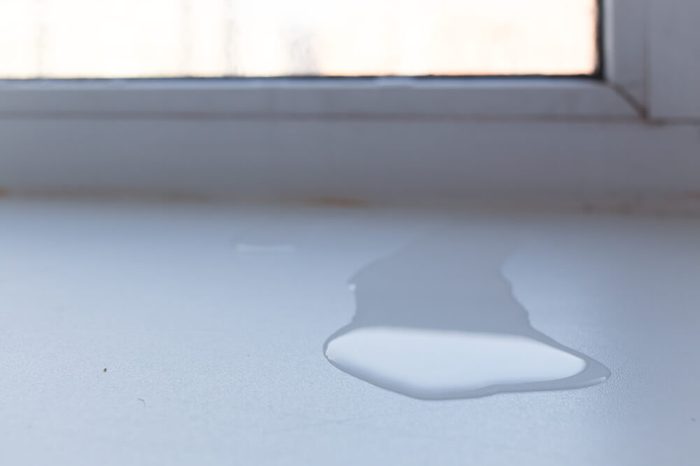
avtk/Shutterstock
Puddles
If you notice some puddles on the floor (and you don’t have a new puppy), it could be a sign of poor ventilation and mold. “Mold is a particularly common problem in bathrooms with inadequate ventilation,” says Yoel Pioraut, managing partner at MyHome Design + Remodeling. “Examine pipes to check for moisture or excessive condensation. If everything checks out, but you have a lack of ventilation, it’s time to call in a contractor to add an exhaust fan,” recommends Pioraut. Allergies and asthma reactions are intensified when mold is present.
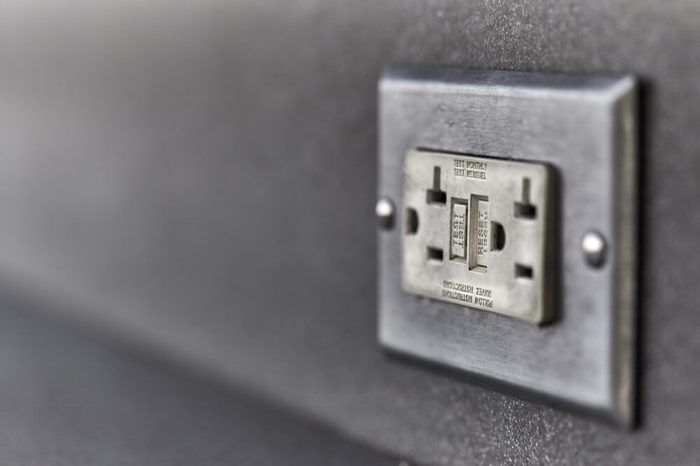
Pamela Au/Shutterstock
Tripping GFCI
The Ground Fault Circuit Interrupter (GFCI) is an electrical safety device that trips electrical circuits when they detect ground faults or leakage currents. “These outlets prevent deadly shock by quickly shutting off power to the circuit when the electricity flowing into the circuit differs from that returning,” says Keith Pinkerton, owner of Mr. Electric of Huntsville, Alabama, a Neighborly company. In some cases, the switches may stay on and trip off when the test button is pressed. That’s a sign a new GFCI should be installed by an electrician. Avoid other electricity hazards by knowing the truth about these electricity myths.
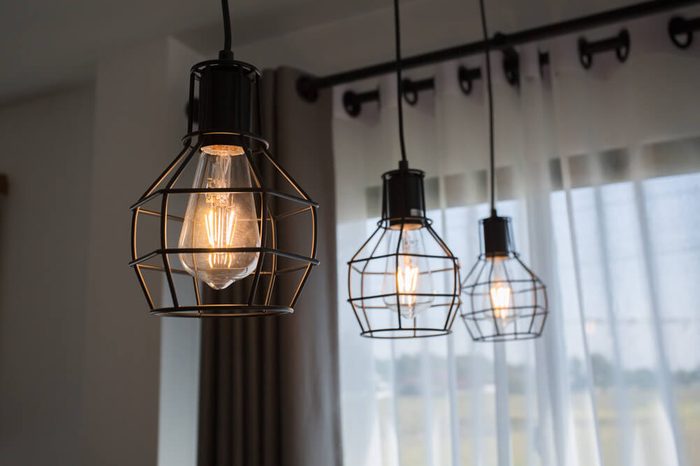
ATK WORK/Shutterstock
Flickering lights
Flickering and blinking lights may seem ghostly, but it’s probably overloaded electrical circuits. Pinkerton says other signs include dimming lights, blown fuses, warm or discolored wall plates, crackling, sizzling, or buzzing from receptacles. A mild shock from touching appliances or burning odor from receptacle or wall switches should also be cause for alarm. “Overloaded electrical circuits should only be repaired by a licensed, qualified electrician,” says Pinkerton.
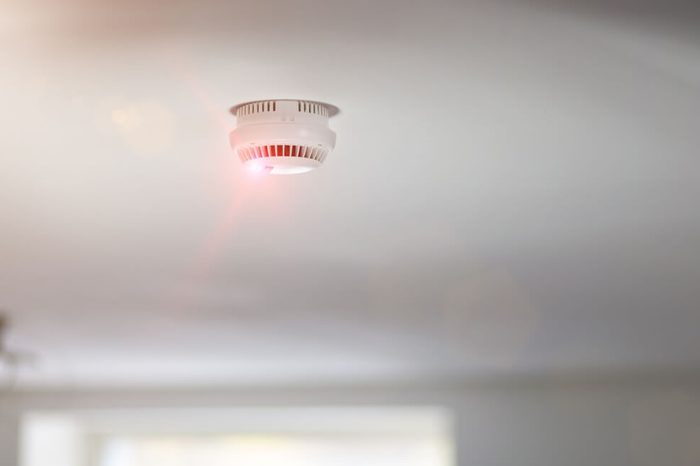
Alexander Kirch/Shutterstock
Annoying beeps
Yes, the annoying beeps on your smoke alarm usually wake you up at 3 a.m., but don’t just knock it off the ceiling and forget about it. It’s a sign it needs to be fixed. It could be a dying battery or dead backup battery, dust, or a sign of a malfunction. “Roughly two-thirds of all home fire deaths occur when smoke alarms are not working,” says Pinkerton. “Check the home to verify smoke alarms are installed in every bedroom, outside each sleeping area, and on every level of the home. A licensed, qualified electrician should be contacted to verify your home’s smoke alarm system meets the latest building and electrical codes.” Smoke alarms are one of the common items with hidden health risks you need to know.

ppa/Shutterstock
Creosote build-up
A crackling fire is so cozy, but when those dancing flames don’t completely burn off the oils in the wood, they off-gas as volatiles (aka volatile organic compounds, or VOCs) and rise with the smoke. As the smoke cools, it condenses with water and other chemicals inside the chimney and flue, creating a build-up of creosote; this can lead to chimney fires and house fires. “Bringing in an expert to assess and repair if needed is always recommended because of the risk of fire or death,” says Robert Boudreau, InterNACHI-Certified Home Inspector, Metro-West Appraisal and Home Inspections. The National Fire Protection Association recommends that chimneys, fireplaces, and vents be inspected at least once per year. This is just one of the scary ways your fireplace could be toxic.
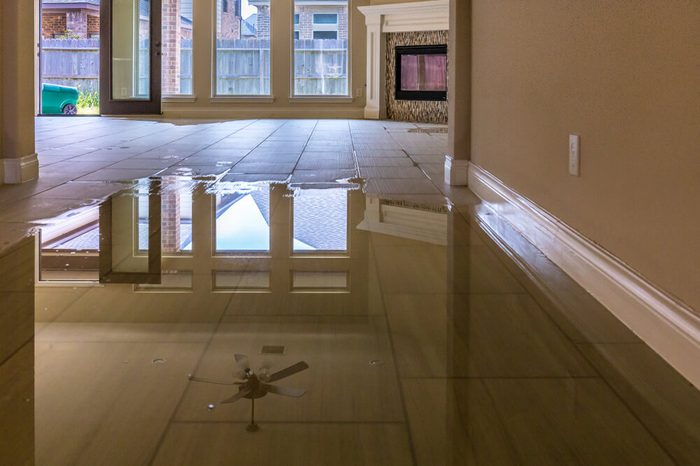
michelmond/Shutterstock
Pump on the fritz
Hey, how’s your sump pump looking? It’s probably not something you think about very often…until it fails and leaves you with a flooded basement. Don’t ignore the signs of possible failure. “Checking connections, cleaning the pump and vents, and making sure the float switch is not restricted can be done by the homeowner,” says Boudreau. “A battery backup pump is also an inexpensive way to prevent failure,” says Boudreau. Checking your pump is one of the 16 things all smart homeowners do once a year.
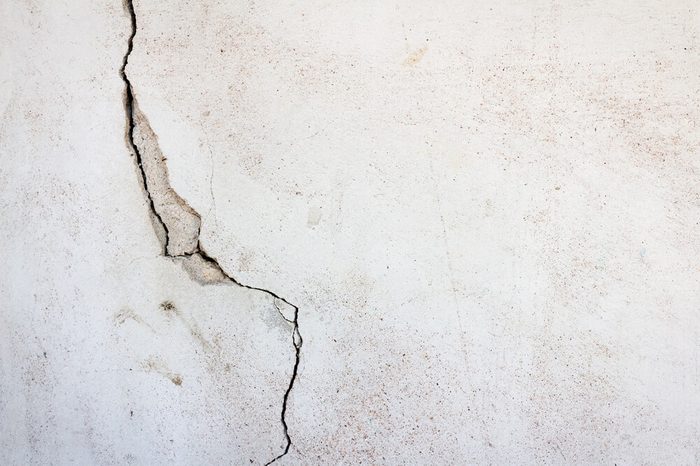
releon8211/Shutterstock
Not making the grade
Improper grading can cause cracks, deterioration of foundation walls, and structural damage if you don’t know what to look for. “Spotting grading issues is the easiest if water is pooling next to a home’s foundation. But sometimes it is difficult to detect the source because water can be running towards to the home below the surface or water can be pooling because of rain,” says Boudreau. “Adding soil to exterior foundation below siding is an easy and cheap solution.” Changing the downspouts and ensuring they are 6 feet away from the home is another option but if more drastic grading is necessary, a pro needs to be called. Be on the lookout for these other hidden home expenses that drain your bank account.

Take Photo/Shutterstock
Cracks and gaps
Speaking of foundation, there are signs inside your house you should look for on a regular basis. These include gaps and cracks in hardwood floors, or cracks at the corners of door jambs and window frames, says Patrick Knight, training, licensing and inspection support manager of WIN Home Inspection. Minors cracks should be monitored, but cracks over 1/8 to 1/4 inches should be investigated by a pro. “Uneven floors and doors that don’t shut right can be annoyances, but if that settlement continues, then the structure can become at risk,” cautions Knight. Another safety tip: hire professionals for these 12 home improvement projects you should never DIY.
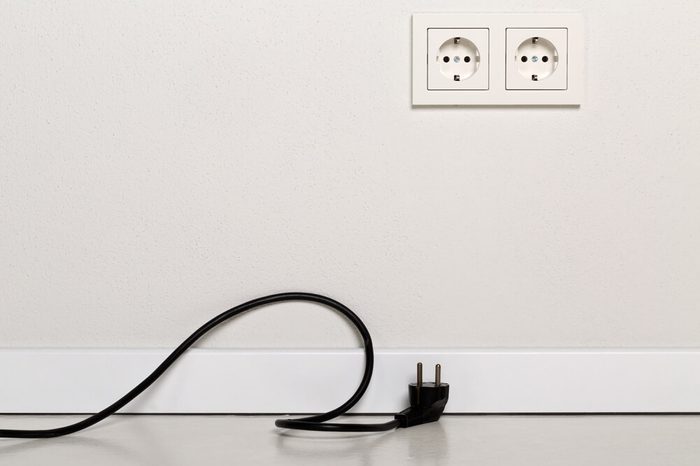
Shawn Hempel/Shutterstock
Mixing old and new
Do you have an old house with 2-prong outlets in some rooms and updated 3-prong in others? Do you see mixed wire type, open junctions or just worn out wiring? “In older houses where electrical wiring has been updated, it’s important to make sure these changes were done to-code and by a professional. Substandard wiring can not only lead to blown circuits, but old or faulty wiring left intact can cause fires,” warns Knight. Contacting an electrician is recommended for this home improvement, so don’t cut corners and try to DIY. That said, you can save money with these home improvement projects you can do yourself.
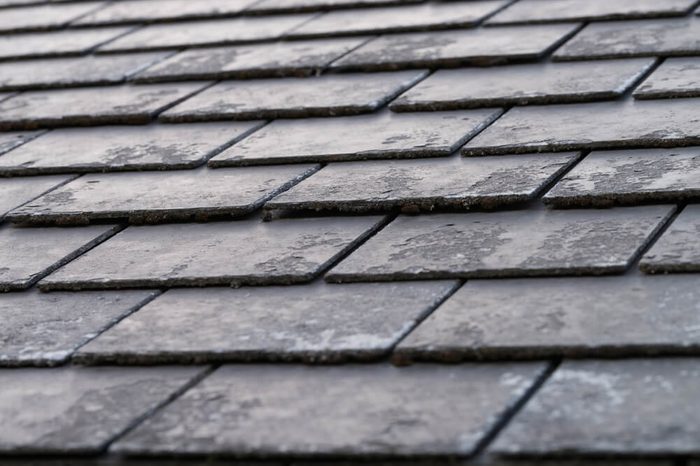
Manuel Capellari/Shutterstock
Up on a roof
If you’re comfortable doing so, check out your roof with a ladder or get a decent view with binoculars. The National Roofing Contractors Association recommends inspecting it twice a year—in the fall and spring. Knight says to look for bumps or dips; discolored, missing, or broken shingles; gutters and attached drainage. “The biggest thing that can happen are leaks. Leaks lead to structural issues as well as moisture-related issues in the home,” says Knight. You can replace missing shingles that flew off in a storm and caulk flashing and hammer down popped nails yourself, but call a pro if you’re not comfortable working on the roof or if extensive damage is found.
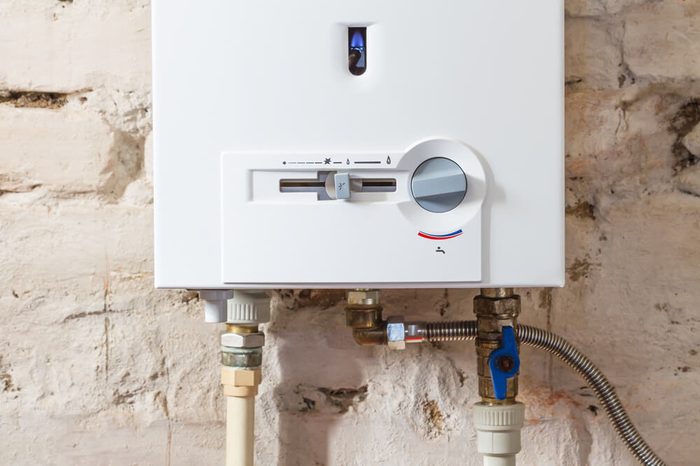
marketlan/Shutterstock
Leaking ducts and flue pipes
When it comes to boilers or furnaces, “if ain’t broke, don’t fix it” is a common mentality. But even if they’re keeping your toes warm, you should definitely be checking these on a regular basis to look for warning signs things are headed south, such as a yellow or jumpy pilot flame. In addition, Knight says to check for cracks, rusting and/or leaking flue pipes, as this is a big hazard for carbon monoxide. That old furnace might be a “classic,” or it could be one of the 17 warning signs a house could be a money pit.
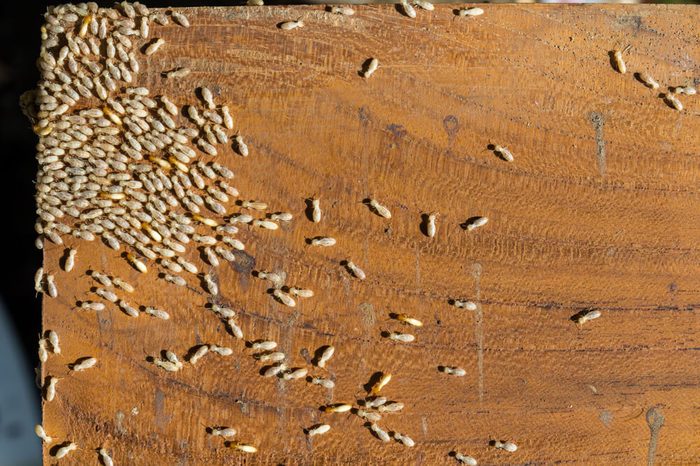
kpboonjit/Shutterstock
Subterranean destroyers
Bubbling paint may be a sign of moisture build-up…or termites. You’re hoping it’s moisture, right? “Subterranean termites eat the wood and process it into food. Termites make mud tubes because their bodies must stay moist,” says Knight. You can spot some of the evidence: mud tubes, shredded wings that look like tiny fish scales, sagging or blisters in flooring, hollow or weak sounding wood, or wood that is damaged. It usually takes years of unnoticed termite activity to destroy a house, but they can certainly damage structural components, like the floor joists which support your house. Call an exterminator to assess the extent of infestation, and note these 15 sneaky signs your home’s about to be infested.
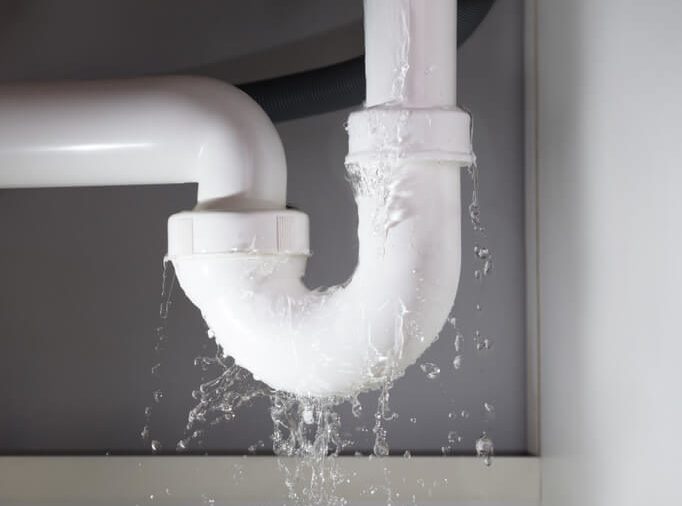
Andrey_Popov/Shutterstock
Hard-to-trace leaks
Leaky pipes behind the wall, like in the tub and shower area, go unnoticed until you see visible damage. “Water damage can cause structural issues as well as mold and moisture issues,” says Knight. Signs something is amiss are blistering paint, warped walls, damaged wallpaper, loose tiles, a buckling or cracked floor, and mold or mildew on non-shower walls. “Once you have leaks that show up in walls or start causing floor damage, a pro should be called,” says Knight. The longer it takes you to detect the leak, the more extensive the damage could be.
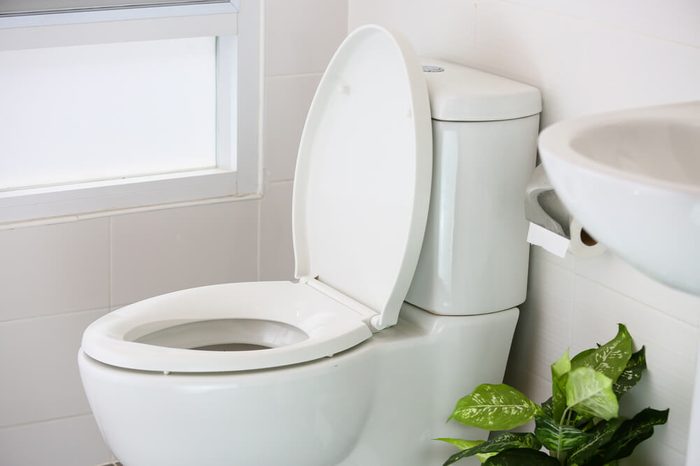
curraheeshutter/Shutterstock
Gurgles and burping
Sounds that babies make? Yes, but if your toilet is making this sound, it’s not cute. Built-up grease, large quantities of food in the garbage disposal, or using your toilet like a waste-basket contributes to a sewer system backup. According to Glenn Gallas, vice president of operations, Mr. Rooter Plumbing, a Neighborly company, signs of a sewer system backup include gurgling, burping, and overflowing fixtures in toilets, tubs, showers and sink drains. This is a situation that a plunger isn’t likely going to fix; a plumber should be called as raw sewage is a serious health hazard. If you are having problems with your pipes, check out these 31 secrets your plumber won’t tell you, before calling them.